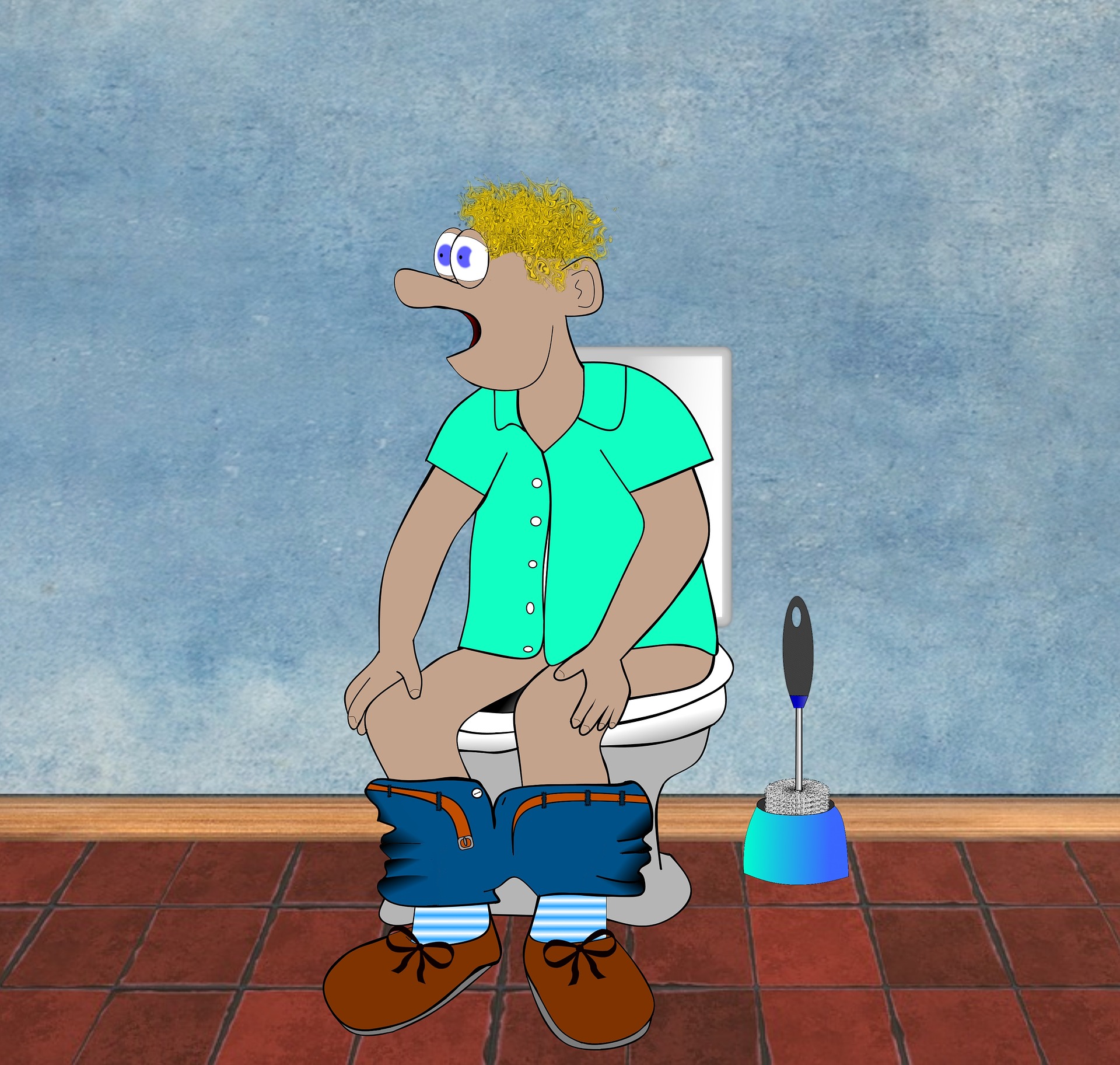The 30th chapter of Madhava Nidana deals with Mutrakrcchra Nidanam i.e.Dysuria, Stragury. Dysuria is a symptom of pain, discomfort, or burning when urinating. It is more common in women than in men. In men, it is more common in older men than younger men.

Causes of Mutrakrcchra —
व्यायाम – तीक्ष्णौषध – रुक्ष – मध्यप्रसङ्ग – नित्यद्रुतपृष्ठयानात् |
आनूपमांसाध्यशनादजीर्णात्स्युर्मूत्रकृच्छ्राणि नृणामिहाष्टौ || १ ||
पृथङ्गमलाः स्वैः कुपिता निदानैः सर्वे अथवा कोपमुपेत्य बस्तौ |
मूत्रस्य मार्गं परिपीडयन्ति यदा तदा मूत्रयतीह कृच्छ्रात् || २ ||
vyāyāma – tīkṣṇauṣadha – rukṣa – madhyaprasaṅga – nityadrutapr̥ṣṭhayānāt|
ānūpamānsādhyaśanādajīrṇātsyurmūtrakr̥cchrāṇi nr̥ṇāmihāṣṭau || 1 ||
pr̥thaṅgamalāḥ svaiḥ kupitā nidānaiḥ sarvē athavā kōpamupētya bastau |
mūtrasya mārgaṁ paripīḍayanti yadā tadā mūtrayatīha kr̥cchrāt || 2 ||
Causes for the appearance of strangury include the following:
- Over indulgence in physical exercises,
- Consuming heat producing medicines and alcoholic drinks;
- Fast riding on animals or other vehicles for long time,
- Eating flesh of animals or birds of marshy places,
- Having eatables too frequently.
These factors affect the urinary bladder and urinary tract producing difficulty for micturition. There are eight types of Mutrakrcchra disease. 1-2
Dosha – wise signs and symptoms of Mutrakrcchra —
तीव्रार्तिरुग्वङ्क्षन – बस्ति – मेढ्रो स्वल्पं मुहुर्मूत्रयतीह वातात् |
पीतं सरक्तं सरुजं सदाहं कृच्छ्रं मुहुर्मूत्रयतीह पित्तात् || ३ ||
बस्तेः सलिङ्गस्य गुरुत्व – शोथौ मूत्रं सपिच्छं कफमूत्रकृच्छ्रे |
सर्वाणि रूपाणि तु सन्निपाताद्भवन्ति तत्कृच्छ्रतमं हि कृच्छ्रम् || ४ ||
tīvrārtirugvaṅkṣana – basti – mēḍhrō svalpaṁ muhurmūtrayatīha vātāt |
pītaṁ saraktaṁ sarujaṁ sadāhaṁ kr̥cchraṁ muhurmūtrayatīha pittāt | 3 |
bastēḥ saliṅgasya gurutva – śōthau mūtraṁ sapicchaṁ kaphamūtrakr̥cchrē |
sarvāṇi rūpāṇi tu sannipātādbhavanti tatkr̥cchratamaṁ hi kr̥cchram || 4 ||
The features of Vataja Mutrakrcchra —
- Severe pain in the groins
- Regions of the bladder and in the penis
- He passes scanty urine frequently.
In the pittaja type of Mutrakrcchra —
- Urine is yellow, mixed with blood and
- is passed out with difficulty associated with
- Pain and burning sensation.
In Kaphaja Type the patient feels —
- Heaviness and swelling of the region of bladder and penis.
- Urine is thick and viscid.
All the above features are found together in the severe form in Tridoshaja type of disease. 3-4
मूत्रवाहिषु शल्येन क्षतेष्वभिहतेषु वा |
मूत्रकृच्छ्रं तदाघाताज्जायते भृशदारुणम् || ५ ||
वातकृच्छ्रेण तुल्यानि तस्य लिङ्गानि निर्दिशेत् |
mūtravāhiṣu śalyēna kṣatēṣvabhihatēṣu vā |
mūtrakr̥cchraṁ tadāghātājjāyatē bhr̥śadāruṇam || 5 ||
vātakr̥cchrēṇa tulyāni tasya liṅgāni nirdiśēt |
Features of the Mutrakrcchra caused by foreign bodies resemble those of Vataja type of Mutrakrcchra including the injury to the urinary tract, difficulty in urination, which in its features resembles Vataja type. 5
शकृतस्तु प्रतीघाताद्वायुर्विगुणतां गतः || ६ ||
आध्मानं वातशूलं च मूत्रसङ्गं करोति च |
śakr̥tastu pratīghātādvāyurviguṇatāṁ gataḥ || 6 ||
ādhmānaṁ vātaśūlaṁ ca mūtrasaṅgaṁ karōti ca |
By suppression of the urge —
- Blockage of the movement of faeces,
- A reverse movement of the call of nature is caused.
It subsequently results in
- difficulty in micturition,
- Distension of the stomach and
- Vataja Type of colic. 6
अश्मरिहेतु तत्पूर्वं मूत्रकृच्छ्रमुदाहरेत् || ७ ||
शुक्रे दोषैरुपहते मूत्रमार्गे विधाविते |
सशुक्रं मूत्रयेत् कृच्छ्राद्वस्ति – मेहनशूलवान् || ८ ||
aśmarihētu tatpūrvaṁ mūtrakr̥cchramudāharēt || 7 ||
śukrē dōṣairupahatē mūtramārgē vidhāvitē |
saśukraṁ mūtrayēt kr̥cchrādvasti – mēhanaśūlavān || 8 ||
The appearance of urinary calculi (ashmari) also leads to mutrakrcchra. On the other hand, when semen is vitiated by the doshas it causes difficulty in micturition, along with pain in the region of the bladder and penis. The patient passes semen mixed urine. 7-8
Similarity and contrast between Ashmari and Sharkara —
अश्मरी शर्करा चैव तुल्यसम्भव – लक्षणे |
विशेषणं शर्करायाः शृणु कीर्तयतो मम || ९ ||
पच्यमाना अश्मरी पित्ताच्छोष्यमाणा च वायुना |
विमुक्तकफसंधाना क्षरन्ती शर्करा माता || १० ||
हृत्पीडा वेपथुः शूलं कुक्षावग्निश्च दुर्बलः |
तया भवति मूर्च्छा च मूत्रकृच्छ्रं च दारुणम् || ११ ||
मूत्रवेगनिरस्ताभिः प्रशमं याति वेदना |
यावदस्याः पुनर्नैति गुडिका स्रोतसो सुखम् || १२ ||
aśmarī śarkarā caiva tulyasambhava – lakṣaṇē |
viśēṣaṇaṁ śarkarāyāḥ śr̥ṇu kīrtayatō mama || 9 ||
pacyamānā aśmarī pittācchōṣyamāṇā ca vāyunā |
vimuktakaphasandhānā kṣarantī śarkarā mātā || 10 ||
hr̥tpīḍā vēpathuḥ śūlaṁ kukṣāvagniśca durbalaḥ |
tayā bhavati mūrcchā ca mūtrakr̥cchraṁ ca dāruṇam || 11 ||
mūtravēganirastābhiḥ praśamaṁ yāti vēdanā |
yāvadasyāḥ punarnaiti guḍikā srōtasō sukham || 12 ||
The causes and features of calculi (ashmari) and gravel (sharkara) are similar in nature; Calculus (ashmari) undergoing processing by pitta, dehydration by Vata and losing the property of cohesion of kapha, is broken into tiny particles and passed out. This is called Gravel (Sharkara).
These symptoms are caused by Gravel (sharkara) —
- Difficulty in micturition along with pain in the region of the heart
- Shivering
- Pain in the stomach
- Poor digestive capacity
- Fainting and
- Great difficulty in micturition.
After the elimination of urine, the pain of the urinary tract subsides and when the passage is obstructed by the gravel or stone, it appears again. 9-12
इति श्री माधवकरविरचिते माधवनिदाने मुत्रकृच्छ्रनिदानं समाप्तम् ||30 ||
iti śrī mādhavakaraviracitē mādhavanidānē mutrakr̥cchranidānaṁ samāptam ||30 ||
Thus concludes the Chapter on Mutrakrcchra Nidana.
Source —
Hello!!
I’m Dr. Malini Bhat MD (Ayu); an Ayurvedic Doctor and a health blogger. Follow me on social media to get daily health tips which you can easily adapt to a healthy lifestyle.